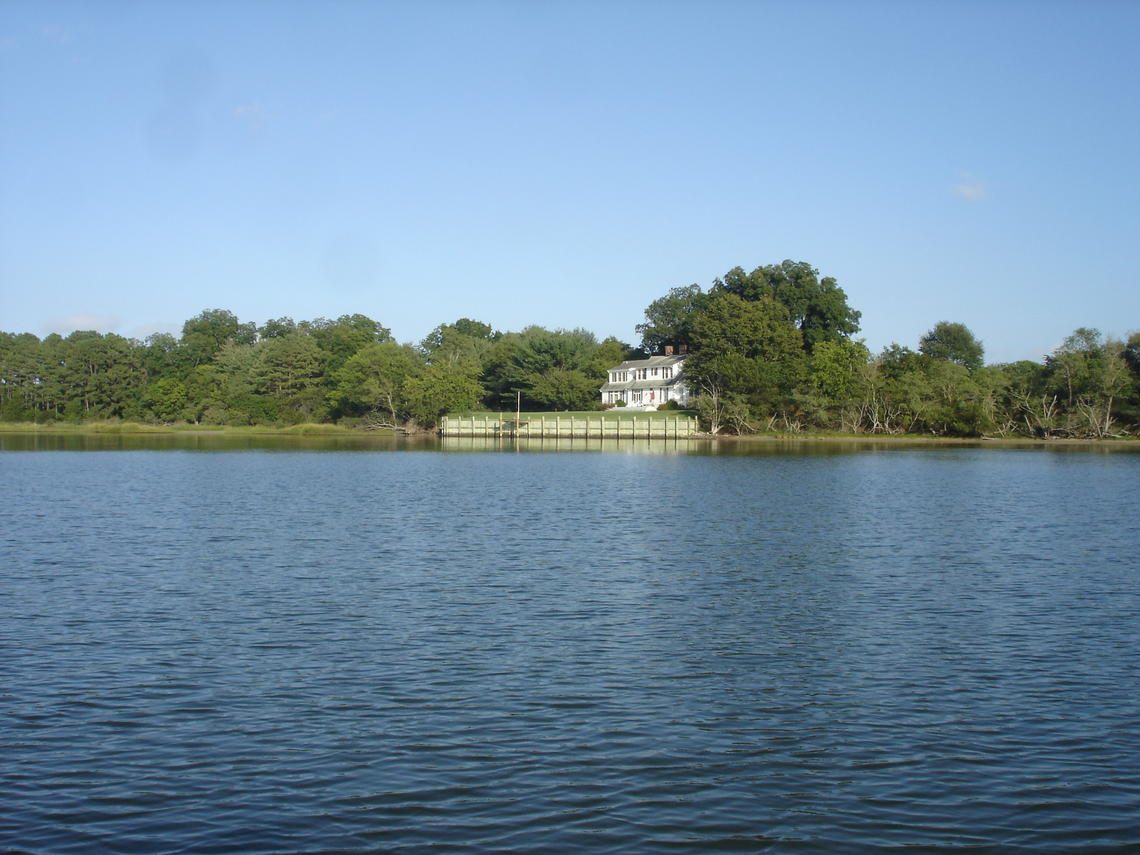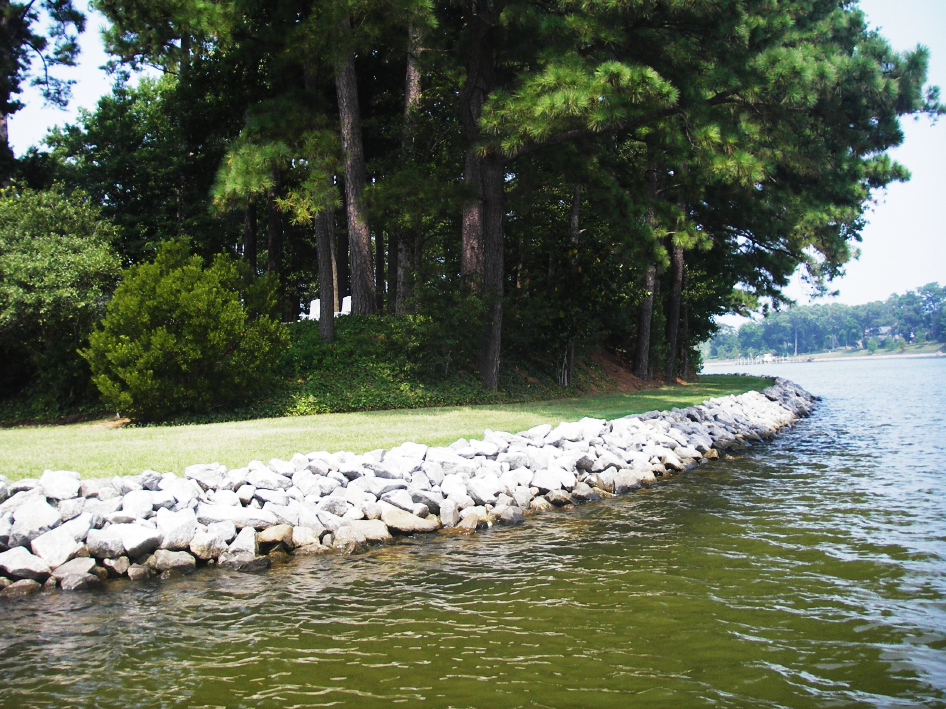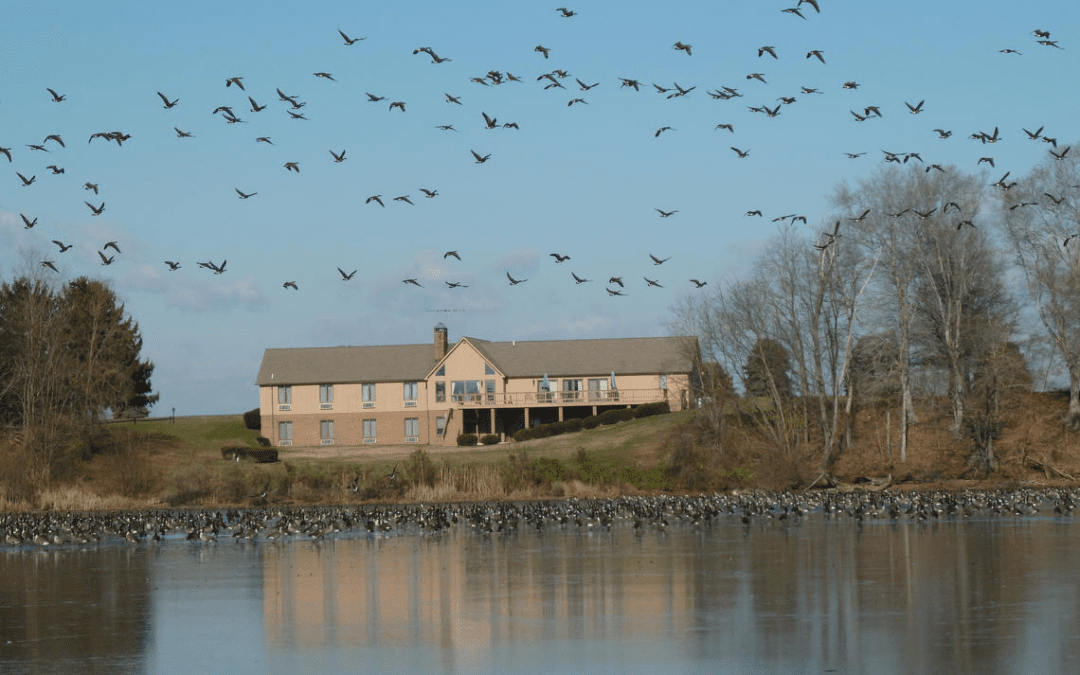According to a recent study by the U.S. Geological Survey, manmade structures built along Chesapeake Bay shorelines to protect against sea level rise, storm surge and erosion have been found to negatively impact waterbirds.
In many coastal regions, shorelines are “armored” with wooden, concrete or steel bulkhead walls or riprap borders that consist of piles of large stones or boulders. Shoreline armoring, however, can result in habitat loss and changes in food availability for many native coastal species as well as contribute to the spread of invasive species.
USGS scientists looked at impacts to waterbirds, which include ducks, geese, shorebirds, marsh birds, seabirds and wading birds. Waterbirds can be indicators of overall ecosystem health and when they are at the top of the food chain, as they are in the Chesapeake Bay, their declining numbers can cause cascading effects throughout the rest of the chain.
“This research will help managers make informed decisions to preserve critical species and ecosystem functions while also protecting against sea level rise,” said USGS biologist Diann Prosser, who is the lead researcher on this study.

Shoreline armoring (bulkhead) along a residential property on Chesapeake Bay. Photograph Credit: Diann Prosser, USGS
Habitat Loss, Food Availability and Invasive Species
Shoreline armoring can displace wetland habitat by removing natural vegetation, which is used by waterbirds for foraging, nesting and roosting. These conditions can reduce the diversity and abundance of prey, such as fish and benthic invertebrates. The altered environment also provides ideal conditions for the spread of a non-native species of Phragmites grass, leading to additional community degradation.
Waves tend to bounce off of armored shorelines, which can lead to changes in sediment composition as well as scouring and erosion of seaward habitats. The structures can also act as a barrier as shoreline habitats naturally migrate landward in response to sea level rise, leading to further habitat loss.
Protecting the Bay
The Chesapeake Bay is the largest estuary in the United States. Its watershed includes more than 3,600 species of fish, wildlife and plants. The Bay produces an annual seafood harvest of about 500 million pounds, according to the Chesapeake Bay Foundation, making it third in the Nation, behind only the Atlantic and Pacific Oceans.
The Bay has thousands of miles of coastline and wetlands that are essential for staging during migration, wintering grounds and breeding habitat for waterbirds on the Atlantic coast. In recent decades, shoreline armoring has expanded in the Bay. Hundreds of miles of shorelines have been armored and it is expected to increase in the coming years in response to expanding urban development and regional sea level rise.
“The health of the Chesapeake Bay has been a concern for over 40 years,” said Prosser. “Our findings suggest that shoreline armoring is detrimental to waterbirds using the Bay and that continued expansion of armoring will be harmful to these communities. In addition, the study suggests that other human activities, such as agriculture and development, in coastal zones may have negative impacts on waterbirds.”

Shoreline armoring (riprap) along a residential property on Chesapeake Bay. (Credit: Integration and Application Network, University of Maryland Center for Environmental Science. Public domain.)
Informing Decisions and Exploring Living Shorelines
This work will aid coastal managers making environmental management decisions about land use and shoreline armoring to ultimately protect the Chesapeake Bay. This includes targeting of particular shorelines for protection and restoration efforts.
In addition, it will help determine whether living shorelines should be developed. Living shorelines are derived from organic materials, such as vegetation and oyster shells, to protect shorelines while preserving ecological functions. Preliminary research suggests that living shorelines may be able to counteract many of the negative impacts of traditional armoring on fish and invertebrates, but further research is needed to assess their ability to support waterbird communities.
Contact: Jessica Fitzpatrick (703-648-6624 or jkfitzpatrick@usgs.gov)

